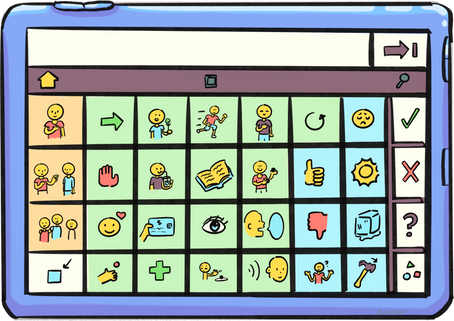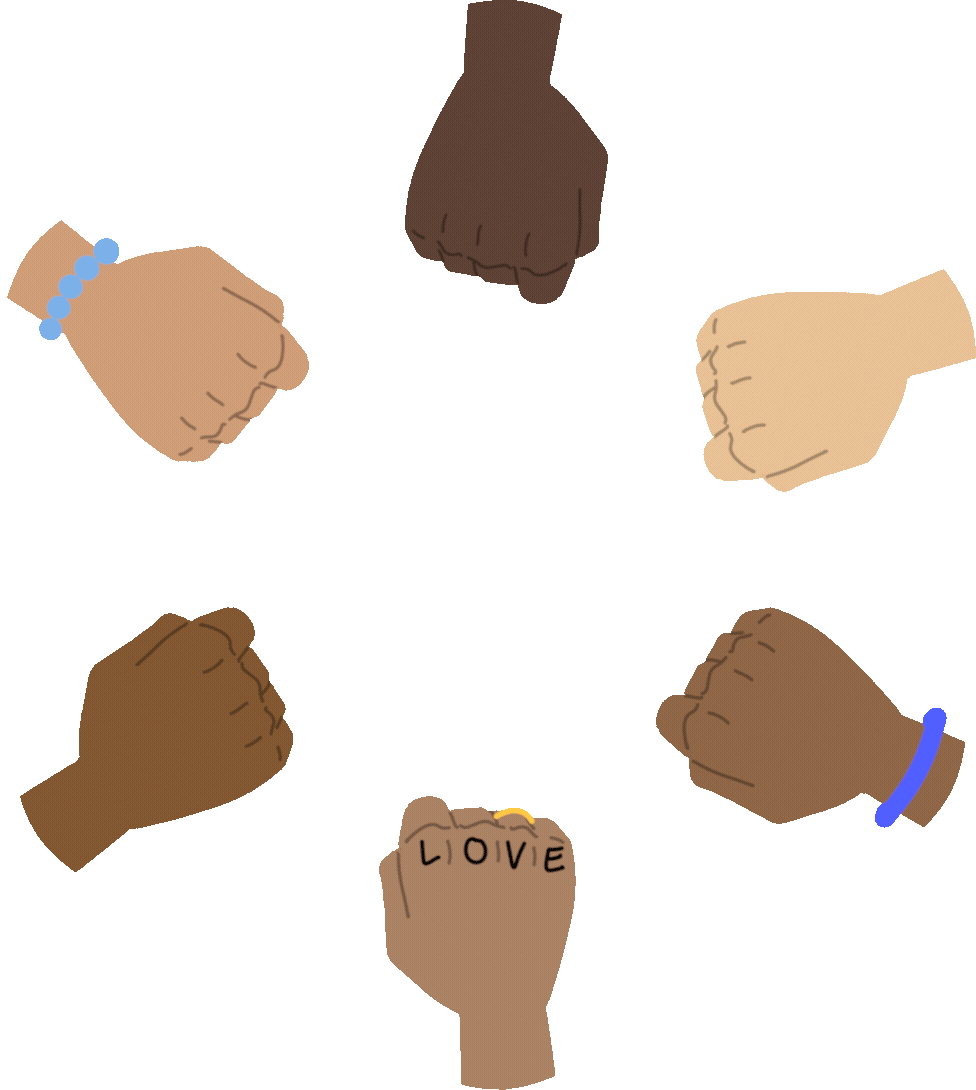Welcome to
My Unique Voice
Jennette Greenwood AAC/AT Consultant
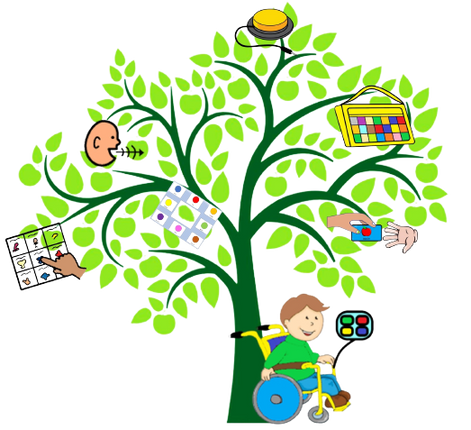
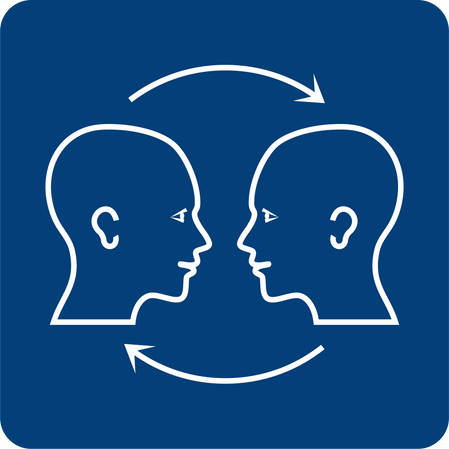
Embarking on 28 years of Special Education: Where every step holds a unique and magical journey in the world of AAC/AT
There are always sounds amongst the trees, but we need to take time to listen.
Everyone has the right to their own unique voice!!
Resources & Information
Home
About Me
Testimonials
Contact
How I Can Help
Welcome to My Unique Voice,
My name is Jennette Greenwood my journey in child care and special education has led to a passion for Augmentative and Alternative Communication (AAC) and Assistive Technology (AT)
Early years (1993-2005): I began my career working with children at Rest-A-While Playgroup in Briercliffe, Lancashire and Briercliffe Primary School, gaining insights into mainstream education.
Passion Ignites (1995-2005): At Primrose Hill Primary SEN School, I supported a visually impaired student. This experience sparked my interest in Augmentative and Alternative Communication (AAC) and Assistive Technology (AT). Eventually, I became the AAC lead at the school.
Expanding Horizons (2005): Inclusive Technology broadened my expertise in AAC/AT. Developing my knowledge of assistive technology.
Specialist Support (2006-2009): At Torview Community Special School, I served as an HLTA/AAC Specialist, helping children develop communication skills and access the world through AAC/AT.
Pendle View Journey (2009-2023): As the AAC Coordinator at Pendle View Primary Special School, I built a comprehensive bank of communication systems, provided children with communication systems, and empowered students to find their unique voices.
Awards & Milestones: In 2023, I was honoured with the British Assistive Technology Scholarship which took me to Orlando for the ATIA Conference. In March of the same year my colleague and I received the AAC Award for "Setting of the Year" at Communication Matters.
New Beginnings (August 2023): I've retired from my role in SEN education to embark on a new journey as an AAC/AT Consultant. My business, My Unique Voice, embodies my philosophy and passion for helping children and adults access the world in their own unique way.
My Unique Voice (Communication for all!)
Resources & Information
Testimonials
Contact
About Me
How I Can Help
Home
How I can Help
One-to-One Training:
Tailored training sessions to empower
you in supporting children/adult with communication needs.
Group Staff Training:
Engaging workshops designed for groups of professionals to enhance their collective expertise in AAC/AT.
Client-Centred Approach:
My passion lies in working with children/adults
to help them develop their own unique voices, enabling them to communicate effectively.
Customised Communication Systems:
Crafting personalised low-tech communication systems
Training
Can be provided face to face or online
Guidance and Assistance:
Establishing an AAC/AT
Department in Your Setting:
Training and Support:
“If you would like to discuss training or seek more information please don’t hesitate to contact me”
Develop strategies:
Develop effective
communication strategies
using your existing high and
low-tech communication
systems,
Resources & Information
Testimonials
Contact
About Me
How I Can Help
Home
Creative Ideas for Utilising Recordable Message Devices
“Lets make it fun”
Understanding Low-Tech
and High-Tech
Communication Systems
Strategies and Suggestions
for Effective
Communication Modelling
"Empowering a unique voices, is the key to fostering understanding and building a more inclusive world."
What are
Objects of Reference
Using Touch Cues
Resources & Information
Testimonials
Contact
About Me
How I Can Help
Home
Understanding Low-Tech and High-Tech Communication Systems
High-Tech communication systems are typically characterised by their reliance on a power source which can be batteries or electricity. Here are some examples of high-tech communication systems:
Touchscreen devices (can be adapted for switch accessibly)
Eye gaze
iPads with communication apps
Single message devices that can record speech, music, and sound can also be attached to switch toys.
Devices with multiple recordable message levels offer additional features to suit individuals’ needs
Talking photo albums
Environmental control systems
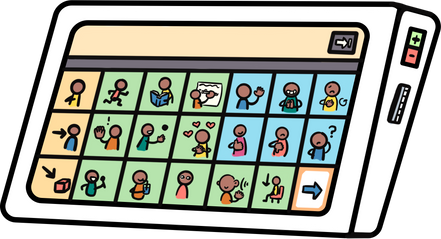
A Low-Tech communication system refers to a method that operates without the requirement for batteries or electricity. Here are some examples of low-tech communication systems:
Paper-based communication books featuring symbols, pictures, letters and phrases
Individual symbols, photos
Communication boards
Eye-pointing communication books
Touch Cues
Objects of reference
Sign Language
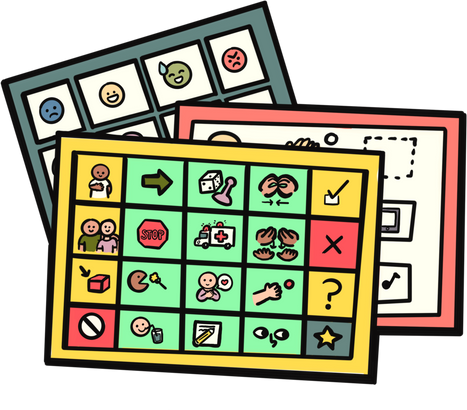
Resources & Information
Testimonials
Contact
About Me
How I Can Help
Home
Creating a fun and entertaining message on a communication device can be a great way to encourage communication.
Here are some tips to make it engaging
Select a device that can
be easily activated.
(Does the tactile feedback
offer a reward or cause any issues?)
Turn communication into
a game. E.g, use the device to play “I Spy” to encourages a child to communicate
their response
Model the use of the device yourself so adult/child can see how it’s done.
Use colourful and appealing images, symbols icons, sound effects or audio cues that represent the adult/child’s interests and preferred
activities
Include hidden or surprise messages that can be discovered when activated, creating an element of excitement
Include funny or silly
messages that can make the indiviual laugh and encourage them to communicate
for the joy of it
Record short story
prompts on a device
to encourage participation during a story or creating a
story a with symbols or
pictures
Record favourite songs or
rhymes.
Singing along can be an enjoyable way to engage in
communication
Explore your environment.
Open the door, turn around, stop, go,
What’s this way?
Make communication an
enjoyable and rewarding experience. Be patient, encourage and provide positive reinforcement to build
confidence and motivation
"Let your individual voice radiate its uniqueness."
Resources & Information
Testimonials
Contact
About Me
How I Can Help
Home

Let’s build something cool

Found you

Did you trump?

I’m a space explore

Can we go to the park?

I’m a bubble magician

Who me?

go

Let’s go for a picnic

Oh no who made that smell

Time for a magic show

What’s that?

Turn around

Tell me a joke

Boo

Open the door

Let’s make it Fun!!
These messages aim to add a playful element when using a communication device,
making it a delightful
tool for interaction and fun activities

Sing me a funny song

Dance

Tickle monster beware

Mission super giggle

stop

I’m a robot, beep beep

Let’s
have an adventure

Let’s play tickle

I’m a
rock star

Let’s play Hide & Seek

Let’s fly

spider

Tell me a story

Use a combination of messages when using a communication device with levels.

freeze

Princess magic

Ready for some mischief?

Superhero cape on let’s go

Hey
presto

Dinosaur roar

oh no

Shiver me timbers treasure

Guess what I saw?
Resources & Information
Testimonials
Contact
About Me
How I Can Help
Home
Strategies and Suggestions for Effective Communication Modelling
Everyone has the right to communication.
Every individual, regardless of age, is entitled to constant communication and the right to express themselves. Augmentative and Alternative Communication (AAC) serves as the vital tool to ensure this fundamental human right. It guarantees that everyone has the right to acquire communication skills, to engage in conversations rather than being discussed, to stay informed and inquire about their circumstances, and to voice their preferences.
What does AAC mean
Augmentative and Alternative Communication
(AAC) encompasses a broad spectrum of
methods that either supplement or substitute spoken communication. These methods encompass gestures, sign language, symbols, photographs, word boards, communication boards, sound, objects of reference, touch and communication devices
Modelling Communication
This involves pointing to or selecting
words/symbol on a AAC system while you say the corresponding word. By consistently demonstrating words and symbols in everyday contexts, you enable children and adults to grasp the meaning of these elements. This approach facilitates their comprehension of the location of words/symbols
on the AAC system and how they can be
integrated to form meaningful messages
Who can engage in modelling?
Anyone can participate in modelling
communication. When families and teams collaborate modelling communication systems, it enhances the chances of success for children/adults Utilising AAC. It's essential to provide support and encouragement to all members of a family or team, ensuring they feel at ease and self-assured when modelling communication.
What is the purpose of modelling
communication?
Modelling enables children and adults to witness someone else using the same method of communication, thereby enhancing their language skills and promoting greater utilisation of AAC. Modelling can be an effective strategy, particularly for children
and adults who may experience distress or
anxiety, helping them navigate through these situations more effectively.
Begin with modest steps.
Initially, when you commence modelling, it might seem challenging and even awkward. Start with small actions and gradually develop your modelling
skills each day. Concentrate on a few words or symbols to model at a time. As you point to a word or symbol, vocalise the word simultaneously. Over time, with
each modelling experience, it will become more natural and less daunting. The most significant
aspect is to take that initial step.
Remember
Repeated exposure to words or phrases is crucial for both children and adults to effectively grasp communication. Consistent engagement in modeling using communication systems, such as through reading, talking, and interactive play, is valuable for learning where symbols/words are on a
communication system and learning new words
and language patterns..
Resources & Information
Testimonials
Contact
About Me
How I Can Help
Home
Objects of Reference (Signifiers)
What are objects of reference? (Also known as signifiers)
Objects of reference, also called signifiers, represent items, activities, places, or people. They are used with individuals who struggle with spoken words, written language, symbols, or photographs. These objects help individuals understand what is happening in their surroundings
Who can implement it?
Everyone can implement the use of objects of reference/signifiers throughout the day.

Why should we use Objects of reference
To increase understanding of the spoken word
To signal the beginning and end of an activity
To enable children/adults to make their own choices
To enable children/adults to request items and activities
To provide a visual representation of their day
To help to understand and remember
what is happening
We all use objects of reference (signifiers) in our daily lives, such as:
Traffic lights
Sign post (Airport)
Brands or products
Symbols on smartphones, tablets, and computers
Petrol light
Calendar Events
Morning coffee
Home appliances beeping
How should we use objects of reference?
Work together with your child/adult to explore the object of reference.
Allowing time for processing information, especially for those who might
be tactile defensive.
Using relevant language that corresponds to the current situation.
Speaking clearly and unhurriedly. Acknowledging non-verbal cues and vocalisations.
Displaying objects of reference as part of a
daily timetable.
Objects of reference can be:
A seashell for the beach
A kitchen spoon for cooking
A specific ringtone associated to a particular person
A object relating to a person such as a ring
Tactile objects, smells and sounds of reference
offering sensory information.
Easier to interpreter then pictures for some, linking concrete objects to symbolic language
Resources & Information
Testimonials
Contact
About Me
How I Can Help
Home
Touch Cues: Guidelines and Recommendations for Implementing Touch Cues in Supporting Individuals with Complex Needs
Using Touch Cues and Verbal Cues with Children/adults with Complex Needs
Children/adults with complex needs, often require specialised support to enhance their understanding and communication skills. One effective approach is to use touch cues in conjunction with verbal cues. Touch cues involve physical contact, such as gentle tapping, guiding, or tactile prompts, and they can significantly enhance communication, learning, and overall well-being for these children/adults.
Enhancing Comprehension:
Sensory Stimulation: Many children/adults with complex needs benefit from sensory input.
Touch cues can help children/adults to connect with their environment and understand the context.
For example, a gentle tap on the shoulder along with giving a verbal instruction can draw their attention and help them focus on the message.
Building Vocabulary:
By linking touch cues to specific words or
concepts, caregivers/support staff can help children/adults expand their vocabulary and comprehension. This association between touch and language can serve as a bridge for communication development
Transitions:
Transitioning from one activity to another can be challenging for children/adults with complex needs. A gentle touch or handholding can provide reassurance and signal a change in activity.
Emotional Regulation:
Individuals with complex needs might find it challenging to comprehend and convey their emotions. Physical gestures like a reassuring touch can assist in managing their emotions and offering
a feeling of safety.
Predictability:
Regular use of touch cues in a supportive and non-intrusive manner can create a predictable environment, which is crucial for children/adults with complex needs who may struggle with uncertainty and anxiety. The children/adults learn to associate touch
cues with positive and safe interactions.
Resources & Information
Testimonials
Contact
About Me
How I Can Help
Home
The following touch cues are provided as a starting point for generating ideas. Please tailor them to suit the unique needs of the children or adults you are working with
Points to Consider
Incorporating touch cues should always be done in a sensitive and respectful manner, taking into consideration children/adults' sensory preferences and individual needs. It's important that caregivers/support staff develop a tailored approach that aligns with children/adult's goals and objectives. Additionally, it's vital to seek consent from children/adults, when possible, to ensure their comfort and autonomy.
In summary, using touch cues alongside verbal cues is a valuable strategy for children/adults with complex needs. This approach not only supports their communication and comprehension but also nurtures emotional connections, which could help to reduces anxiety, and promotes a positive learning environment. By focusing on the individual child/adult's needs and preferences, caregivers/support staff can create a more inclusive and supportive environment for these children/adults to thrive. It is important to emphasise the need for personalised touch cues that are tailored to each child/adult's specific requirements. Not all touch cues are suitable for every child/adult.
Ready to work
Tap index finger
Goodbye
Palm to palm moving backwards and forwards
More
Put one hand on top of the other
Hello
Circular
movement
on the back/palm
of
the hand
Finish
Brush from
shoulders down the arms
We are moving
Three taps
on the shoulder
Resources & Information
Testimonials
Contact
About Me
How I Can Help
Home
Testimonials
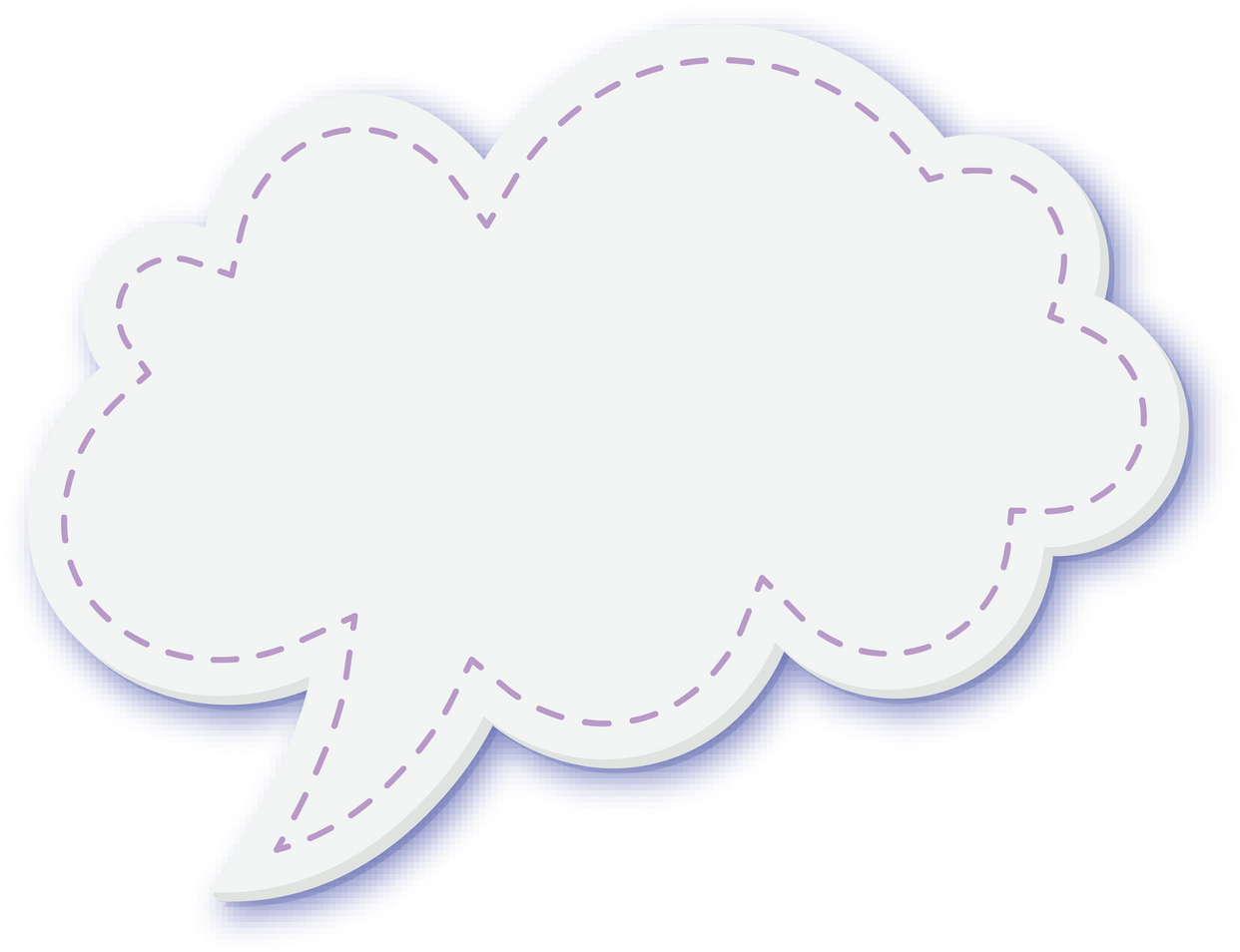
Jennette was a fantastic support to my non-verbal child, Jennette custom-made communication resources to suit my childs individual needs including pictures of food/drinks/condiments in individual restaurants to enable my child to order their own meal instead of the choice being made for them without them having any input. My child is now able to communicate her needs using various methods - Makaton, PECS and a communication device which Jennette helped to obtain for my child and repeatedly supported me to use and update it.

My son was initially reluctant to speak as his delayed speech was very unclear and he was frustrated with others not being able to understand him within a few months of participating in Jennettes fun 'chat club' he was much more confident about speaking infront of others to the extent that he is now a chatter-box!. I was concerned that my son did not understand his different feelings and emotions so Jennette worked with him using software to identify the feelings
Resources & Information
Testimonials
Contact
About Me
How I Can Help
Home
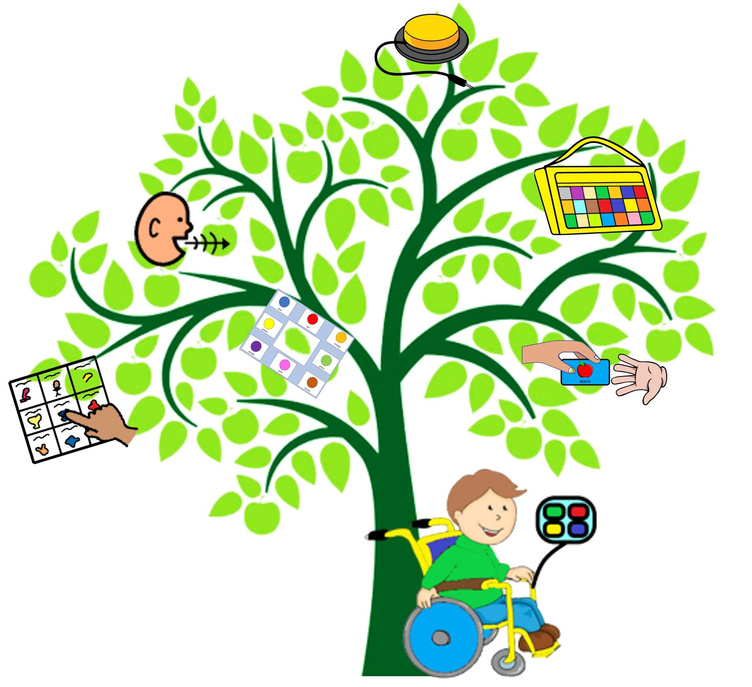
My Uniqune Voice
"Every individual possesses the fundamental right to engage in communication on their terms, in a manner that honours their identity. They have the entitlement to receive information about ongoing events and to be present in environments that promote interpersonal communication."
Jennette Greenwood AAC/AT Consultant
07864382251

There are always sounds amongst the trees, but we need to take time to listen.
Everyone has the right to their own unique voice!!
© website and logo designed and created by Jennette Greenwood My Unique Voice November 2023 "Created using Canva"

